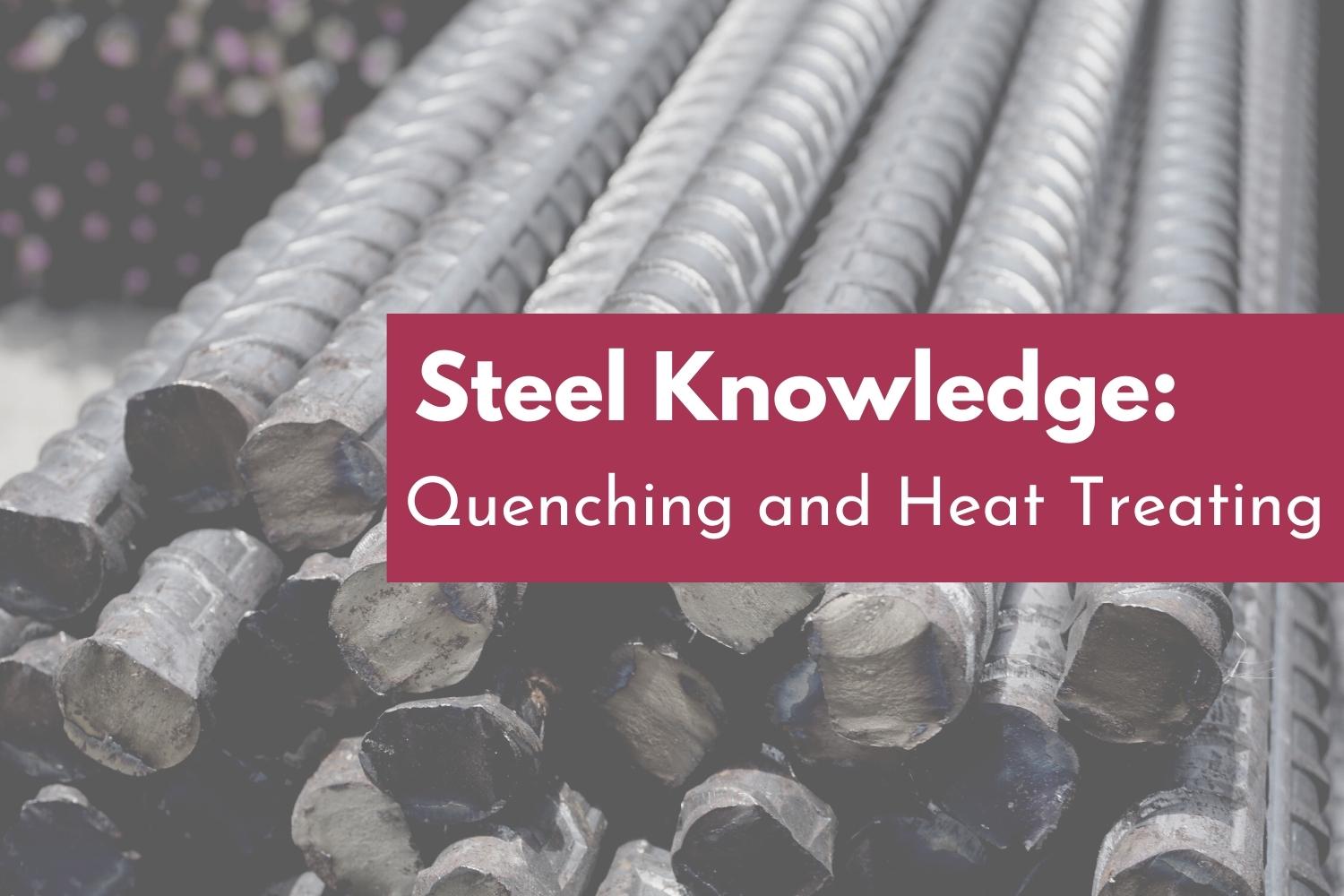Hardening is a method of strengthening knife steel. The knife steel becomes significantly tougher but also more brittle if heated to between 1050-1090°C (1922 and 1994°F) and then immediately cooled (quenched).
Why is Heat Treatment Necessary?
Without heat treating, particularly steel, metal components for anything from electronics to airplanes wouldn't operate as intended or would not be made at all. Particularly, non-ferrous metal components would be considerably weaker.
Heat treatment strengthens metals such as steel, bronze, brass, titanium alloys, and aluminium. Most of these materials are utilised in manufacturing automobiles, aircraft, and other devices that depend on sturdy metals for safety and reliability.
Since heat-treated metals are usually stronger than untreated metals, treating metal components up front minimises corrosion, which reduces the need for costly metal part replacements frequently.
The material is tempered to lessen its brittleness. Typically, this involves heating it to 175–350°C (347–662°F) for two hours, producing a hardness of 53–63 HRC and a better mix between sharpness holding, grind-ability, and sturdiness.
Upon hardening, tempering should be done as soon as possible, typically within an hour. Before beginning the tempering process, the blade must be left to cool down. Failure to complete the transition to martensite may compromise the effects of the hardening process.
While a low tempering degree will result in harder and somewhat more brittle material, a greater tempering temperature will generate a little softer steel with higher toughness.
For example, a camping knife or a utility knife may be tempered at 350°C (662°F) to make it resistant to breaking under pressure. The knife can, however, be tempered at 175°C (347°F) for maximum hardness if it must maintain a sharp edge.
Only in exceptional circumstances, such as when great hardness is required to meet strict specifications, can tempering temperatures below 175°C (347°F) be utilised, as this will cause the material to become extremely brittle.
The same goes for tempering temperatures above 350°C (662°F), which could result in brittleness and decreased corrosion resistance. Be aware that higher temperatures than the tempering temperature may compromise the qualities of the hardened knife.
A properly executed hardening process will provide a completed knife blade with a good fit of hardness, toughness, and oxidation resistance.
How is Heat Treatment Conducted?
The steel or alloy is heated to a predetermined temperature, often as high as 2400°F, maintained at that degree for a predetermined time, and then cooled to attain the required effect. The structural makeup of the metal, often referred to as its microstructure, changes when it is hot, which eventually alters its physical characteristics.
The period of heating the metal is referred to as the "soak time." The duration of the soak time has a significant impact on the properties of metal because the metal that has been soaked for a longer time will experience distinct micro-structural changes than the metal that has been heated for a shorter time.
The outcome of the metal also depends on the cooling procedure following the soak time. To attain the intended outcome, steel may be cooled in the furnace either fast (a process known as quenching) or slowly. The desired qualities in a metal or alloy are a result of the soak heating rate, soak duration, cooling temperature, and duration.
The qualities that are altered depend on the temperature at which the metal is heated during the production stage; some metals may even undergo numerous heat treatments.
It isn't easy to ascertain the proper temperatures to heat and cool metals at and how long to spend on each phase of the process for a particular metal or alloy. As a result, material scientists called metallurgists research how heat affects metals and alloys and offer specific instructions on how to carry out these processes safely.
Businesses depend on this data to guarantee that the metal products they produce will have the desired qualities.
Treatment Processes Frequently Used Include:
Hardening
The process of hardening a metal involves heating the metal to a temperature where the constituents in the metal dissolve into a solution. Then, by coming up with a solid remedy and fortifying the metal, flaws in the structure are altered. This improves the metal's or alloy's toughness, making it less bendable.
Annealing
Metals like copper, aluminium, silver, steel, and brass are processed using this method. These materials are heated to a predetermined temperature, maintained there until transformation happens, and then carefully dried by air. The metal is softer after this procedure, which makes it easier to work with and less prone to breaking or cracking.
Tempering
Some metals, such as iron-based alloys, are extremely hard and brittle. Tempering can make a metal less brittle and stronger. To lessen brittleness and preserve hardness, the metal is heated during the tempering cycle to a level below the critical point.
Case Hardening
It's a process of making a material's exterior harder than its core. Case-hardening is utilised for materials that need flexibility but still need to maintain a strong wear layer since hardening can make materials brittle.
Normalisation
Like annealing, this procedure increases the toughness and flexibility of steel by heating it to critical levels and holding it there until alteration happens.
Conclusion
As with any task, it will take some practice for a beginner to see the intended outcomes. Working with various steel before applying the technique to a knife or blade project is essential. You should also consider the heat-treating tools you'll be employing for your job.
After quenching, all that has to be done is to grind away all scale that has formed on the blade. Use your belt sander to gently smoothen the blade until the steel is spotless. After that, you may finish by adding a single or double bevel at the correct angle and using a fine grit for the last bit of honing and buffing.


